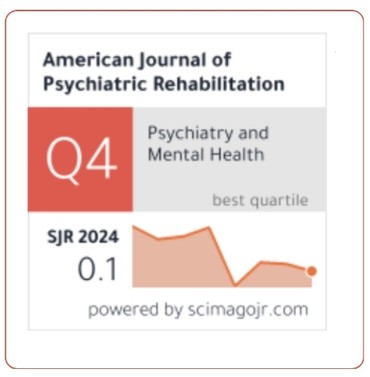Assessment of Attitude and Practice Regarding Diabetic Foot Ulcer Among Nurses in Jordan
DOI:
https://doi.org/10.69980/ajpr.v28i5.354Keywords:
diabetes mellitus, diabetic foot ulcer, diabetic foot care, nurse attitude, nurse practiceAbstract
Background: Diabetes mellitus (DM) is one of the leading causes of death worldwide, and diabetic foot ulcers (DFUs) are a chronic complication that can lead to amputations and reduce the quality of life for patients with diabetes.
Purpose: This study aimed to assess the attitudes and practices of Jordanian nurses regarding diabetic foot ulcers and to explore the potential relationship between these attitudes and nurses’ clinical practices as well as their demographic characteristics.
Methods: We conducted a descriptive, cross-sectional study involving a sample of 256 nurses from nine public hospitals in central, northern and southern Jordan. Participants completed the “Diabetic Foot Ulcer Knowledge, Attitudes, and Practices Questionnaire.”
Results: Half of the participants exhibited negative attitudes (52%; n = 132) and inadequate practices (50.4%; n = 129) regarding diabetic foot ulcers. Nurses’ attitudes were influenced by age group (41–50 years; OR [odds ratio] = 3.891; p = 0.009) and training (OR = 0.576; p = 0.048). Additionally, training nurses through a diabetic foot ulcer course significantly improved their attitudes (p = 0.042). Furthermore, nurses’ practices were influenced by gender (p = 0.040) and working area (OR = 5.712, p = 0.026). Statistical significance was established at p < 0.05.
Conclusion: Jordanian nurses demonstrate poor attitude and inadequate practices regarding diabetic foot ulcers. Thus, healthcare organizations should encourage nurses’ participation in both theoretical and practical training programs to improve their competencies.
References
1. World Health Organization. Diabetes. Accessed March 26, 2020. https://www.who.int/health-topics/diabetes#tab=tab_1
2. International Diabetes Federation. IDF Diabetes Atlas, 9th ed. Brussels, Belgium: 2019. https://www.diabetesatlas.org
3. Munawar K, Kamran A, Ahmad Z. Assessment of knowledge and attitude of nurses regarding diabetic foot care. World J. Pharm. Med. Res. 2019;5(5):259-265.
4. Nisa ZU, Inayat S, Hussain M, Afzal M. Knowledge, attitude, and practices among nurses in Pakistan towards diabetic foot. Eur. Acad. Res. 2019;VII(3):1801-1814.
5. Yousef AlAyed M, Younes N, Al-Smady M, Saleh Khader Y, Alwin Robert A, Ajlouni K. Prevalence of foot ulcers, foot at risk and associated risk factors among Jordanian diabetics. Curr. Diabetes Rev. 2017;13(2): 182-191. https://doi.org/10.2174/1573399812666151210143140
6. Kaya Z, Karaca A. Evaluation of nurses’ knowledge levels of diabetic foot care management. Nurs. Res. Prac. 2018;(1): 8549567. https://doi.org/10.1155/2018/85495677
7. Abdullah W, Al Senany S, Al-Otheimin H. Capacity building for nurses’ knowledge and practice regarding prevention of diabetic foot complications. Int. J. Nurs. Sci. 2017;7(1):1-15. DOI: 10.5923/j.nursing.20170701.01
8. Alotaibi A, Al-Ganmi A, Gholizadeh L, Perry L. Diabetes knowledge of nurses in different countries: an integrative review. Nurse Educ. Today. 2016;39: 32-49.
9. Al-Qaddah RM, Al Eyadeh A., Abu-Qamar MeZ, Younes N, Al-Ryalat D, Haddad F. Knowledge and practice of foot care among diabetics at King Hussein Medical Center, Jordan. J. Royal Med. Serv. 2016;102(3583): 1-10.
10. Polit D F, Beck C T. Nursing Research: Generating and Assessing Evidence for Nursing Practice. Lippincott Williams & Wilkins; 2008.
11. Faul F, Erdfelder E, Buchner A, Lang AG. G* Power 3.1 Manual. Heinrich-Heine-Universität Düsseldorf; 2017.
12. Mayr S, Erdfelder E, Buchner A, Faul F. A short tutorial of GPower. Tutor. Quant. Methods Psychol. 2007;3(2):51-59.
13. Bilal M, Haseeb A, Rehman A, et al.. Knowledge, attitudes, and practices among nurses in Pakistan towards diabetic foot. Cureus. 2018;10(7): e3001. doi: 10.7759/cureus.3001. PMID: 30250763; PMCID: PMC6145799.
14. International Working Group on the Diabetic Foot. (2019). Retrieved April 10, 2020. https://iwgdfguidelines.org/wp-content/uploads/2019/05/02-IWGDF-prevention-guideline-2019.pdf
15. Saw S, Ng T. The design and assessment of questionnaires in clinical research. Singapore Med. J. 2001;42(3):131-135.
16. Zamanzadeh V, Ghahramanian A, Rassouli M, Abbaszadeh A, Alavi-Majd H, Nikanfar A-R. Design and implementation of a content validity study: development of an instrument for measuring patient-centered communication. J. Caring Sci. 2015;4(2):165.
17. Rodrigues I B, Adachi JD, Beattie KA, MacDermid JC. Development and validation of a new tool to measure the facilitators, barriers, and preferences for exercise in people with osteoporosis. BMC Musculoskelet. Disord. 2017;18(1): 540. https://doi.org/10.1186/s12891-017-1914-5
18. Kumarasinghe SA, Hettiarachchi P, Wasalathanthri S. Nurses’ knowledge on diabetic foot ulcer disease and their attitudes towards patients affected: a cross‐sectional institution‐based study. J. Clin. Nurs. 2018;27(1-2):e203-e212. doi:10.1111/jocn.13917
19. Schoen DE, Gausia K, Glance DG, Thompson SC. Improving rural and remote practitioners’ knowledge of the diabetic foot: findings from an educational intervention. J. Foot Ankle Res. 2016;9(1):26. DOI 10.1186/s13047-016-0157-2
Downloads
Published
Issue
Section
License
Copyright (c) 2025 American Journal of Psychiatric Rehabilitation

This work is licensed under a Creative Commons Attribution 4.0 International License.
This is an Open Access article distributed under the terms of the Creative Commons Attribution 4.0 International License permitting all use, distribution, and reproduction in any medium, provided the work is properly cited.









